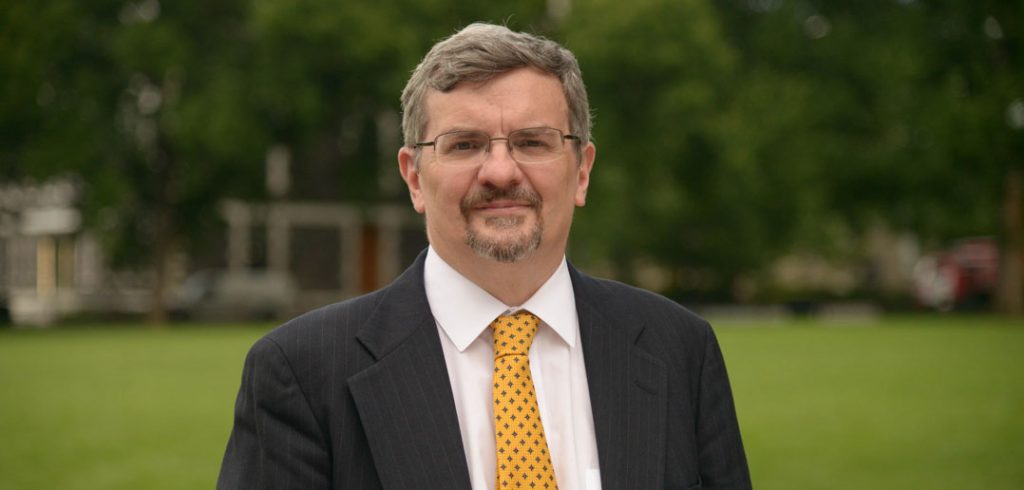Whether Jewish, Protestant, or Catholic, faith communities are wrestling with troublesome statistics about religious disaffiliation.
Several years ago, a National Study of Youth and Religion analysis revealed that many American adolescents didn’t see religion as an integral part of their daily lives. But it was the Pew Research Center’s 2009 survey, Faith in Flux, that hinted at the growing challenges ahead for the Catholic Church, especially for leaders who work in youth ministry. According to the study, one-in-10 American adults have left the church after having been raised Catholic, and 48 percent of Catholics who are now unaffiliated left Catholicism before age 18.
Tackling a growing trend
To address the growing trend, the church has adopted a new initiative called the National Dialogue on Catholic Pastoral Ministry with Youth and Young Adults. The three-year initiative is sponsored by the United States Conference of Catholic Bishops (USCCB), the National Federation for Catholic Youth Ministry, the National Catholic Network de Pastoral Juvenil Hispana (La RED), and the USCCB’s National Advisory Team on Young Adult Ministry.
In alignment with the XV Ordinary General Assembly of the Synod of Bishops on “Young People, the Faith, and Vocational Discernment,” and the V Encuentro Nacional Hispano de Pastoral assemblages, the national dialogue will promote large-scale discussions with adolescents, youth ministers, bishops, and other religious leaders about how best to engage and form today’s youth and young adults.
“In the past, the church focused on those who stayed [in the church],” said Harold “Bud” Horell, Ph.D., assistant professor of religious education at the Graduate School of Religion and Religious Education, who attended an exclusive event this summer introducing the national dialogue at the USCCB Convocation of Catholic Leaders: The Joy of the Gospel in America. “Then there was a shift in focus to say, ‘Well, since we’re focused on reversing the trend, let’s try to reach out to young people who are not affiliated, and see if we can reach them.’”
Now, the church will focus its efforts on all young people in order to have a national dialogue on why some young Catholics remain active in the church, and why others have decided to leave, he said.
“It’s an opportunity to learn how we can change and refashion the way that we think about church today, so it’s an appealing place for young people,” said Horell.
Since young adults today are taking longer to marry, buy homes, and find careers, the national dialogue organizers have redefined how it classifies youth and young adults. Before, youth ministries focused on adolescents to age 20, and young adults from ages 20 to 40, but now the church has called for an explicit focus on young people from ages 16 to 29.
The goal is to work closely with young Catholics to sustain the vision of the church amid the fast-changing nature of contemporary society.
“The partnership is even more important today because we need young people to help us understand cultural trends, and how they’re shaping and changing life, and presenting new opportunities,” said Horell.
A diverse and complicated world
One issue that has presented an obstacle for the church is the shift in how different generations look at the world. Horell said that Catholics who are a part of the Baby Boomer generation tend to believe in grand meta-narratives, which helps them make sense of life. But the millennial generation tends to have a more pragmatic outlook on the meaning of life.
“There has been a sort of mismatch between the institution and young people because we’re still presenting religion as a grand meta-narrative of the world, but we have young people who are saying that they no longer need that,” said Horell.
But although increasing numbers of American adolescents describe themselves as religiously unaffiliated, they are, according to studies, still interested in spirituality.
“They still believe that their faith requires them to work for the good of society,” said Horell. “They just see themselves as needing to find other places to develop a sense of faith, than getting in their faith communities.”
Horell believes that the conversations that come out of the national dialogue can help pastoral leaders discern where unaffiliated youth and young adults are finding their sense of faith and spirituality, so that the church can reach out to them in a similar way.
“We have a lot to share, and maybe we haven’t found the right way to share it and connect, and take young people’s concerns seriously,” said Horell, explaining that many young people often feel alienated from the church, and are mistrustful of institutions.
As the face of Catholicism in America continues to change, with 54 percent of U.S. millennial Hispanics identifying themselves as Catholics, Horell said there is a lot that today’s generation of Catholics can teach the older generation, particularly those who grew up in fairly homogenous and somewhat isolated communities.
“Youth today learn a multicultural outlook as part of their everyday lives,” he said. “It’s really young people who have taken the lead to help people understand how to make sense of life in a much more diverse and complicated world.”


